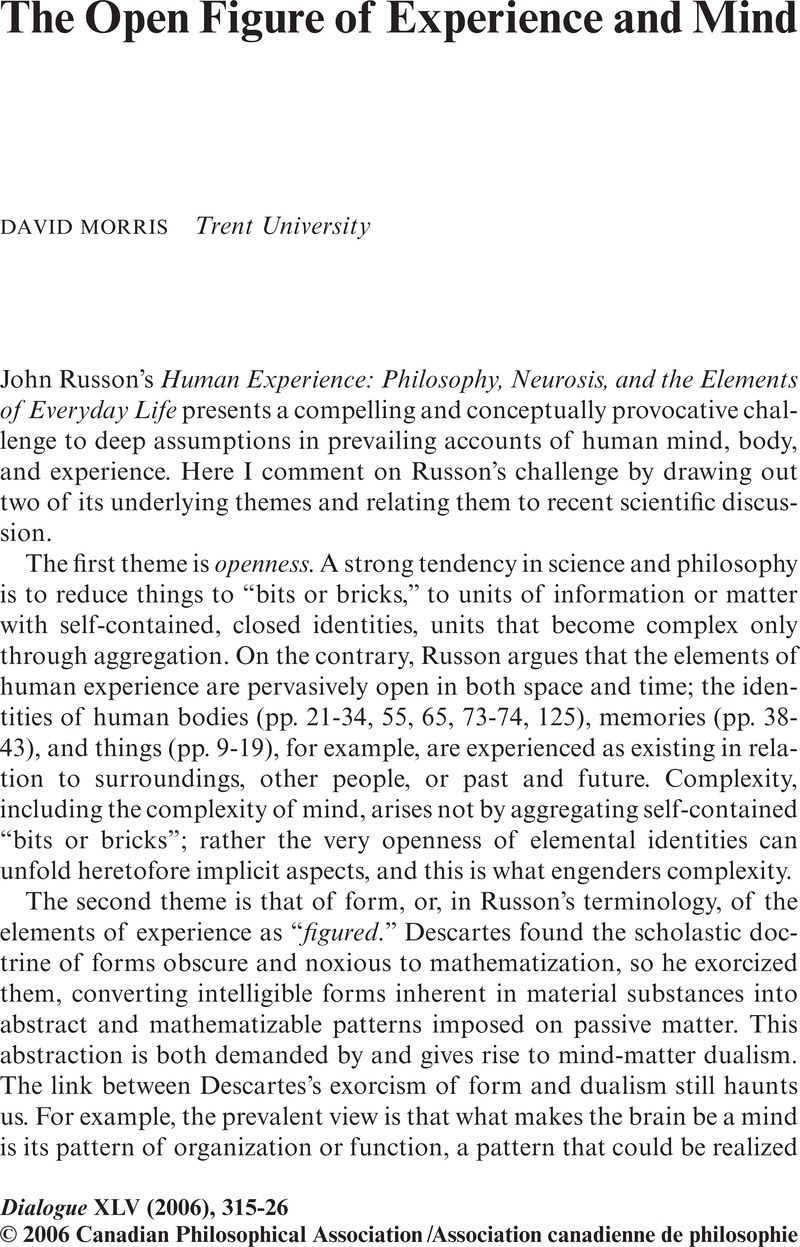Crossref Citations
This article has been cited by the following publications. This list is generated based on data provided by Crossref.
Howell, Whitney
2015.
Learning and the Development of Meaning: Husserl and Merleau‐Ponty on the Temporality of Perception and Habit.
The Southern Journal of Philosophy,
Vol. 53,
Issue. 3,
p.
311.



